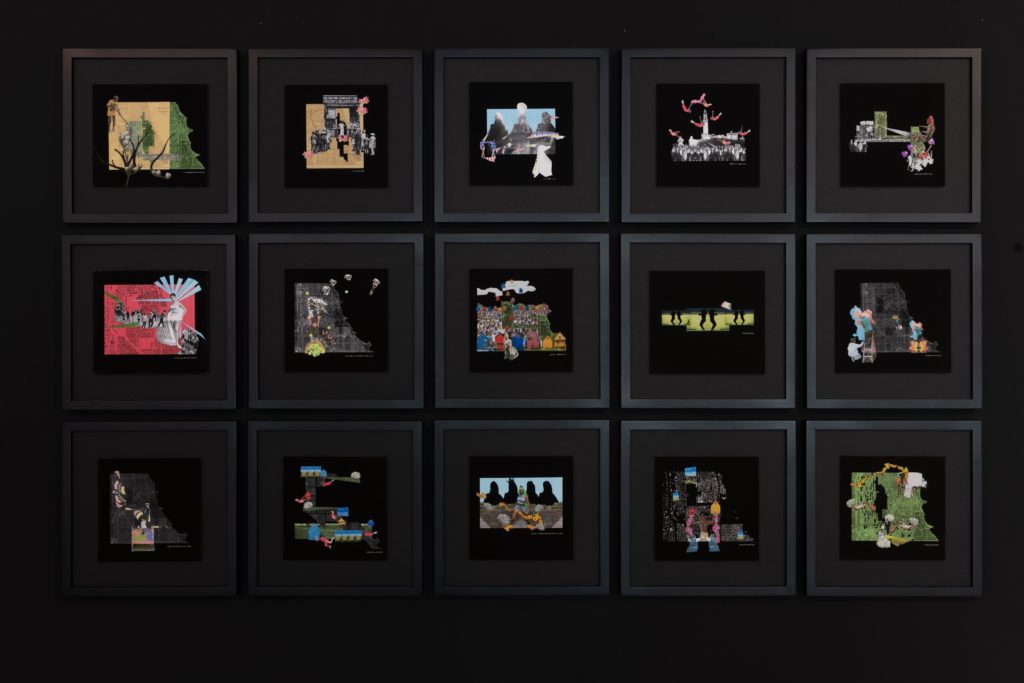
The Chicago Architecture Biennial (CAB) returns this year with its 2021 edition, The Available City, conceptualized by artistic director David Brown. According to the CAB website, this fourth installment “is a framework for a collaborative, community-led design approach that presents transformative possibilities for vacant urban spaces that are created with and for local residents. Through workshops, installations, activations, performances, and programs, The Available City invites a critical global conversation that asks how design can foster collective engagement and agency to identify new forms of shared space in urban areas. The Available City directly confronts the often- opaque process of how cities are designed and developed by proposing an inclusive and transparent design process.”
The Available City opened across a variety of sites in Chicago on September 17, and runs through December 18. A range of Harvard GSD faculty and community members are participating in The Available City.
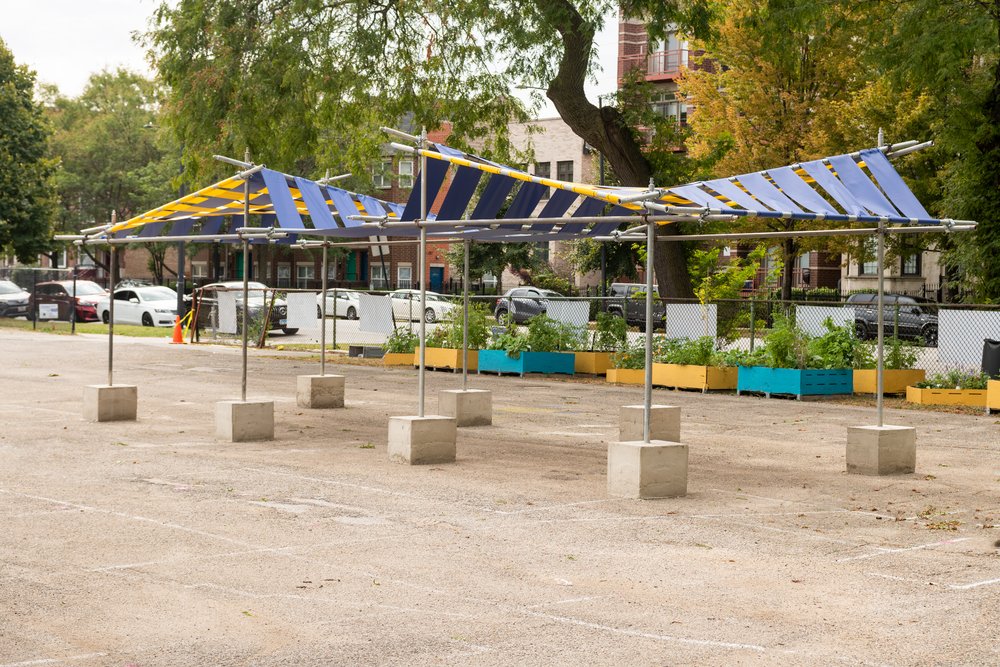
Paola Aguirre (MAUD ’11) and her practice Borderless Studio have contributed Frame(Works) of Resilience. The installation builds on the four-year long project Creative Grounds, which uses design to bring visibility to the almost fifty public schools that have closed in the West and South sides of Chicago. Located at the Overton Incubator, Borderless Studio’s work for CAB includes a new community garden and an outdoor pop-up market with colorful canopies inspired by street market design.
Rekha Auguste-Nelson (MArch ’18), Farnoosh Rafaie (MArch ’18), and Isabel Strauss (MArch ’21) and their recently formed Riff Collaborative have installed Architecture of Reparations at CAB’s Bronzeville Artist Lofts site. Their project began with two years of research into the Bronzeville neighborhood, specifically the displacement of Black residents. A public Request for Proposal (RFP) entitled Architecture of Reparations resulted, telling the story of erasure in Bronzeville, and proposing reparations in the form of housing. In the second phase of the project, they responded to the RFP using vacant and available city-owned land.
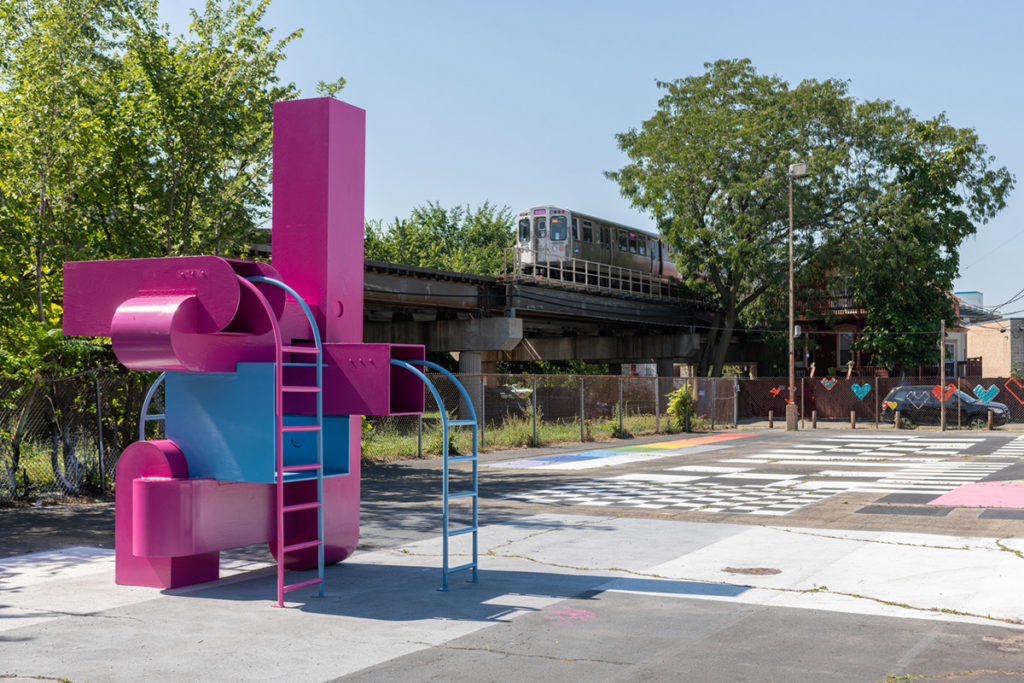
Germane Barnes, winner of the GSD’s 2021 Wheelwright Prize, has collaborated with Shawhin Roudbari and MAS Context to present Block Party at CAB’s Bell Park venue. According to the CAB website, the installation—along with its accompanying workshops and events—“serves as a site to discuss the modes by which the built environment promotes or restricts Black space and to call attention to the systemic forces that create blight in communities of color.”
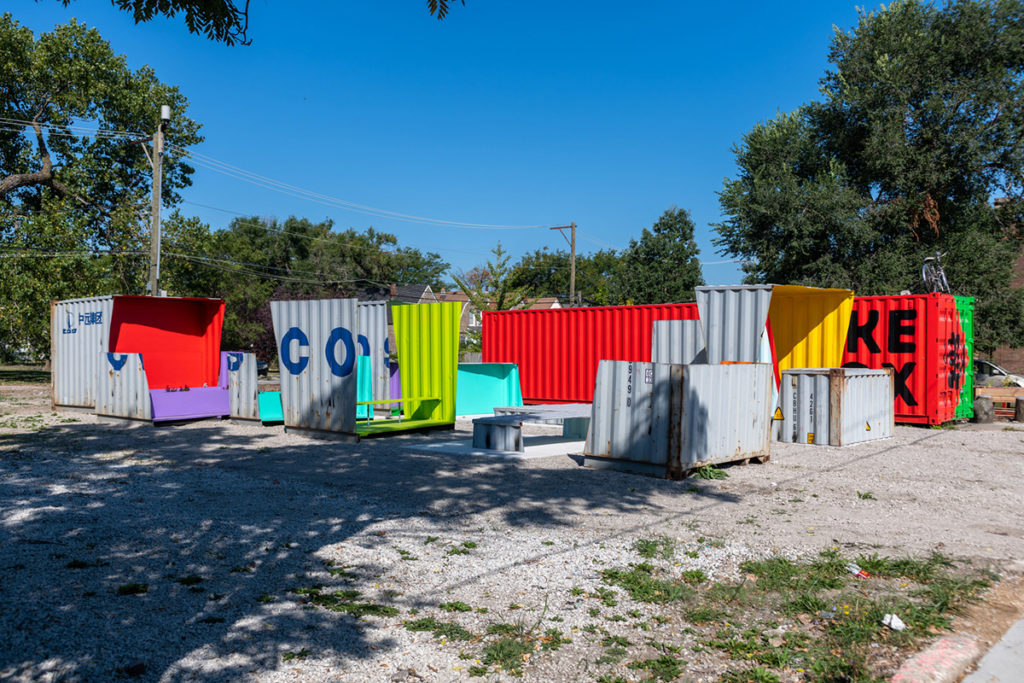
Sekou Cooke (MArch ’14) has installed Grids + Griots, invoking a theme from Cooke’s book Hip-Hop Architecture, at CAB’s YMEN (Young Men’s Educational Network) North Lawndale Bike Box venue. Tension between the image and attitude of the griot (a storyteller in western African cultures) with that of modernist and postmodernist architectural practice underlies Grids + Griots. The CAB website explains, “This design brings together several elements already present on the site and others present in the larger context, each formed using parts of a forty-foot-long shipping container. The pavilion repurposes existing materials, chops them up, and remixes them into a new composition able to be recomposed as needed.”
Jill Desimini, associate professor of landscape architecture, has contributed Staged Succession: An Argument for Urban Landscape Mash-ups, an essay considering what communities could do with the estimated $500,000 to $2 million that public land banks spend mowing their holdings of vacant land, and how communities might loosen the strangleholds of policy and predatory lending to be able to transform property. “Actively caring for a site is, in other words, very different from simply abandoning a space and letting it go,” Desimini writes. “It requires, above all, a drastic shift in perspective away from the either-or mentality of current practice—of mowing or not mowing, of clearing or not clearing, of planting or not planting, of building or not building. As the binaries disappear, the balances shift. Think hybrids, cyborgs, and mash-ups between mown and unmown and suppressed and wild. We can look for other mash-ups—abandoned and owned, improvised and rehearsed, unregulated and decreed.”
Toni L. Griffin (LF ’98), professor in practice of urban planning, and her New York–based practice, Urban American City (urbanAC), have installed Southside Landnarratives in CAB’s Bronzeville Artist Lofts site. According to the CAB website, “This exhibition of collages represents the confrontation of pain and quest for joy found in the Black public realm of Chicago’s Mid-South Side. Each collage, which was assembled by hand and digitally reproduced, illustrates the relationship between publicness for Black Americans and the current urban landscape of vacancy, from southern migration in response to public denial, the public scars left by urban renewal’s land mutilation, and the relentless pursuit of public freedoms in the public realm.”
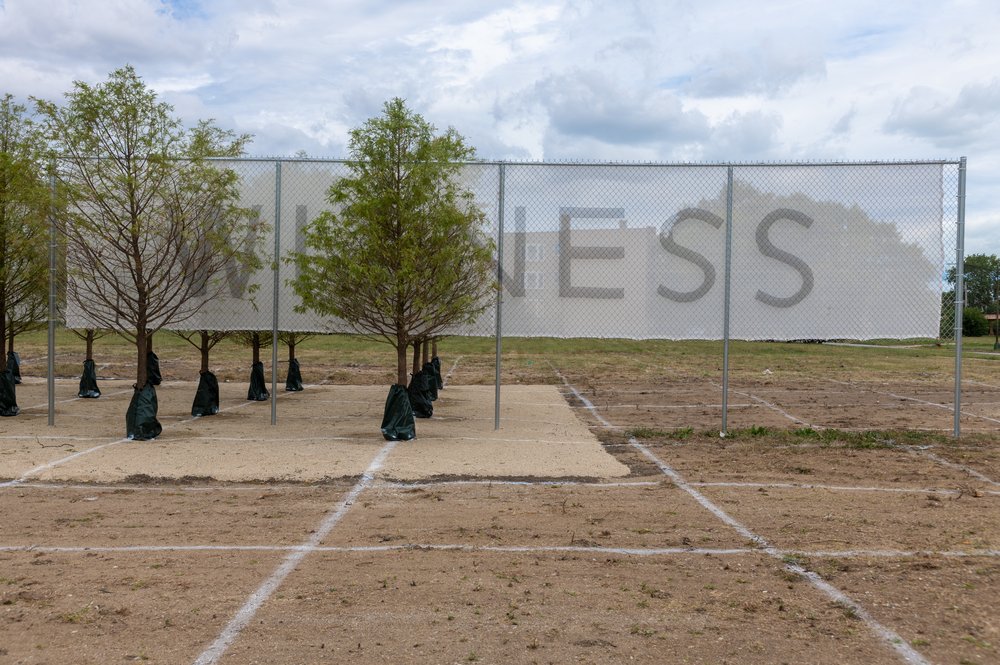
Walter Hood, Harvard GSD’s Spring 2021 Senior Loeb Scholar, and his Oakland-based Hood Design Studio have designed a site of new Witness Trees, referring to the trees that still bear witness even hundreds of years after significant events. The CAB website describes the installation: “Tree grids are scaled to the site: at the corner of East 53rd and South Prairie Avenue, a grid is painted on the lawn at ten-foot intervals, and a grid of sixteen Bald Cypress trees sit at the site’s center. Through the planting of southern trees in northern land, new Witness Trees invokes the history of the Great Migration and establishes a spirit grove to keep the neighborhood safe. Reminiscent of the southern tradition of bottle trees, visitors are asked to record a sentiment or message of witness onto a reflective foil that is then tied to the tree branches. As fall gives way to winter, the grove glistens with light and reflection. Once spring returns, the witness trees will find a new home with residents of the South Side, where they will witness a new history.”

Francisco Quiñones (MArch II ’14) and his Mexico City–based Departamento del Distrito, co-founded with Nathan Friedman, have installed Miracles, Now at CAB’s Graham Foundation site. According to the CAB website, “Miracles, Now seeks opportunities of recovery and reinvention within the remains of urban and architectural projects constructed during the so-called Milagro Mexicano or ‘Mexican Miracle.’ This exceptional period of sustained economic growth between the 1940s and 1970s spurred the formation of Mexico’s modern identity, one specifically produced and marketed for a global audience.”
Surella Segú (LF ’18) and her Mexico City–based El Cielo have installed The Opportunity of Scarcity at CAB’s Graham Foundation site. The CAB website explains, “This installation serves as a ground to continuously recompose a vision formed by relating existing unconnected sites on the periphery of Mexico City through open spaces. For this installation, visitors are invited to rearrange the site models and add amenities, such as gardens, paths, benches, trees—made by artisans in Mexico—to reimagine urban landscape in Mexico City and offer inspiration for similar alternative futures for empty lots in Chicago.”